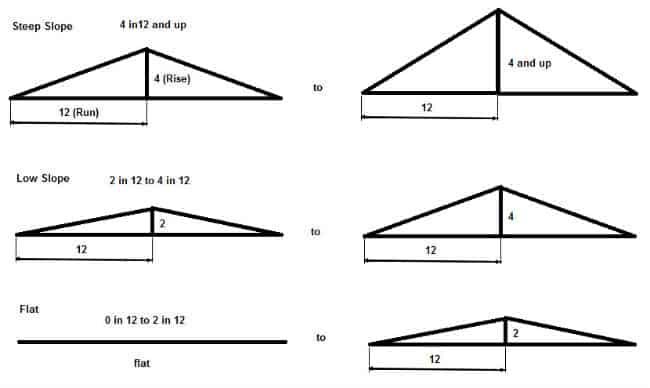Choosing the right pitch for a shed roof is essential for functionality and aesthetics. A shed roof is a single-sloped design that has become popular for various applications, from garden sheds to additional structures on residential properties.
With my roofing and structural engineering background, I offer this detailed guide to help you select the best pitch for your shed roof, ensuring a durable and visually appealing result.

What is a Shed Roof?
A shed roof, also known as a single-slope roof, consists of just one sloping surface. Unlike traditional gable roofs with two sides meeting at a ridge, a shed roof features a straightforward design with only one angle. This type of roof is not only cost-effective but also easy to install.
Read also: Roof Pitches in Degrees
Key Characteristics of a Shed Roof
- Single Slope: A single inclined plane from the top of the structure to the base.
- Simple Design: Easier and more affordable to construct than more complex roof styles.
- Versatile Application: Suitable for sheds, garages, and even as an architectural element in homes.
Why Roof Pitch Matters
The pitch for a shed roof is the angle of the slope and is critical for several reasons:
- Water Drainage: Proper pitch ensures effective rain and snow runoff.
- Structural Integrity: Correct pitch contributes to the overall strength and stability of the roof.
- Aesthetics: The pitch affects the visual appeal and can complement the design of the building.
Minimum Pitch for a Shed Roof
To ensure the shed roof functions well, it’s important to understand the minimum pitch required. Generally, the minimum recommended pitch is ¼ inch per 12 inches of horizontal run. This measurement may need adjustments based on specific design needs and environmental factors.
Methods to Measure Roof Pitch
Here are two effective methods to measure the pitch of your shed roof:
| Method | Description |
|---|---|
| Top-Down Measurement | Measure from the top of the roof, marking every 12 inches along the slope and measuring vertically to the roof surface. |
| Bottom-Up Measurement | Measure from the bottom of the rafters, either in the attic or at the rafter’s underside, to the roof surface. |
Finding the Best Pitch for Your Shed Roof
Choosing the ideal pitch for your shed roof depends on several factors:
Factors to Consider
| Factor | Details |
|---|---|
| Purpose of the Shed | For minimal storage, a shallow pitch suffices. For a larger storage space or home office, a steeper pitch offers more headroom. |
| Local Climate | Steeper pitches are better for heavy rain or snow to ensure proper drainage and avoid potential leaks. |
| Aesthetic Style | Consider how the pitch complements the surrounding architecture. Popular choices include the classic gable shed for a traditional look or the gambrel roof for a barn-like appearance. |
Common Roof Types and Pitches
| Roof Type | Description | Typical Pitch Range |
|---|---|---|
| Gable Shed | Traditional two-sloped design. | 4/12 to 12/12 |
| Gambrel Roof Shed | Features two different slopes for increased headroom. | 6/12 to 8/12 |
| Lean-To Shed | Single slope roof, often attached to another structure. | 1/4 inch per foot to 3/12 |
Ideal Pitch for a 12×12 Shed
For a 12×12 shed, which offers 144 square feet of space, you can select from various roofing styles based on your needs:
- Gable Roof: A moderate pitch of around 4/12 to 6/12 is commonly used.
- Gambrel Roof: A steeper pitch provides more interior space, such as 7/12 to 8/12.
- Lean-To Roof: A lower pitch, such as 2/12, is suitable for simpler structures.

Conclusion
Determining the right pitch for a shed roof involves balancing functionality with design preferences. You can select a pitch that meets your specific needs by considering factors such as the shed’s purpose, local weather conditions, and aesthetic goals.
Whether you choose a shallow or steep pitch, proper measurement and adherence to these guidelines will ensure a successful roofing project.
This guide leverages years of experience in roofing and structural design to offer you practical advice on choosing the best pitch for your shed roof. By following these recommendations, you can achieve a durable, efficient, and visually pleasing roof for your shed.
Additional Resources
For further reading and resources, explore:
- Roof Pitch Calculator: Tools to help you determine the exact pitch for your shed roof.
- Building Codes and Standards: Ensure your pitch complies with local regulations.
By applying these principles and considering your unique requirements, you will be well on your way to selecting the ideal pitch for your shed roof.


